"Here in the United States, wastewater levels of SARS-CoV-2 are finally LOW on a national level. In fact, according to JP Weiland, we are at a level lower than we saw in Fall 2023 and 2022. COVID transmission has decreased significantly in many places. There are approximately 310,000 new infections per day and only 1 in every 108 people is currently infected which is significantly better than the almost 1 million daily infections that we saw during the summer wave.
From: https://x.com/JPWeiland/status/1844872825246535941
"Montana and Oregon still have VERY HIGH levels of the SARS-CoV-2 virus in their wastewater, followed by HIGH levels (Level 8) in Arizona, Minnesota, New Hampshire, Vermont, Washington and Wyoming and HIGH levels (Level 7) in Arkansas, Delaware, Idaho, Maine, Massachusetts, Michigan, Oklahoma and West Virginia.
"In the United Kingdom, COVID hospitalizations have increased significantly in England, where they are also starting to see rises in Influenza and RSV.
Variants
"KP.3.1.1 represents 57% of current COVID cases. The new recombinant variant XEC has been doubling over the last three weeks from 2.3% to 5.3% to 10.7% in the United States. XEC is able to escape our immunity better than KP.3.1.1, but it appears that the new fall vaccines should protect us against severe disease. XEC is expected to peak around the end of November, but it is not expected to cause a very large impact on winter surge numbers according to JP Weiland.
Vaccines
"In the United States, the fall mRNA vaccines are based on the KP.2 variant of SARS-CoV-2. However, many places in Europe will offer mRNA COVID vaccines against the JN.1 variant this winter. A new study from Germany shows that the JN.1 mRNA COVID vaccines provide neutralization against KP.3.1.1 and XEC and should protect against hospitalization and severe COVID disease with the current SARS-2 variants. The JN.1 Novavax vaccine was also approved by the European Union for people age 12 and older.
"In a randomized trial, adults in Japan with 3 prior mRNA vaccinations against SARS-CoV-2 were given either a new self-amplifying mRNA vaccine called ARCT-154 or the Pfizer mRNA vaccine. ARCT-154 produced a stronger and longer-lasting immune response compared to the standard Pfizer mRNA vaccine with protection lasting at least 12 months. This suggests that using self-amplifying mRNA vaccines for annual boosters may provide better protection, as long new variants do not change significantly over the year.
COVID, Oral Health and Social Determinants of Health
"In Indiana, 209 people who were COVID positive answered a survey about oral health months after their COVID infection. Self-reported gum disease was associated with lower socioeconomic status, more severe COVID infection, as well as ongoing problems with taste and smell. The study suggests that poor oral health may increase the risk of severe COVID outcomes, especially for lower-income groups.
Pediatrics
"A study from Weill Cornell shows that children with Long COVID have 152% higher odds of being seen in the emergency department. Long COVID kids were most often seen for chest pain, fluid imbalances, and generalized pain. The authors emphasize "the importance of improved guidance [for emergency department staff] for managing Long COVID symptoms in children."
Antiviral treatments
"Nanobodies are made by camels. A group from Beijing, China made a trivalent nanobody called B11-E8-F3 which is composed of three nanobodies joined in a trivalent form that neutralizes SARS-1 and 14 different SARS-CoV-2 variants. Animal studies show therapeutic promise.
Testing
"This week, the FDA approved the first over-the-counter (OTC) rapid-antigen COVID-19/Flu & and B combination test (Healgen Rapid Check COVID-19/Flu A&B Antigen Test) outside of emergency use. Before now, other over-the-counter combination COVID and Flu A and B tests have been available under emergency use authorization only. It is important to remember that people often get symptoms with COVID several days before they test positive on home rapid antigen tests. So, it is important to mask and retest after 48 hours x 2 to be sure that they do not have a COVID infection. One negative COVID test does not mean that you do not have COVID if you have symptoms and repeat tests are necessary to rule out a COVID infection.
This week’s Long COVID research summary:
"This has been a chock-full week of Long COVID news. We are learning that COVID can cause inflammation in the brainstem- which is a vital center for many bodily functions. Three years after COVID infection, people are at 2 to 4x increased risk for heart attack, strokes and other major adverse cardiac events (MACE). Other viruses like the flu do not cause such long term damage. Something in the blood of people with Long COVID and ME/CFS is toxic, causing muscle damage and degradation of mitochondria. Amyloid the in microclots from people with Long COVID makes them impossible to break down. Three genes have been found to be associated with Long COVID. Twenty-one percent of people who have had a COVID infection are later found to have prolonged COVID antigens in the blood (viral persistence), and in people with Long COVID, this number is double.
COVID and the Brainstem
"The brainstem is responsible for many of the body’s most vital functions including breathing, consciousness, blood pressure, heart rate, and sleep. People hospitalized for SARS-CoV-2 infection often have prolonged fatigue, breathlessness, and chest pain. A group from the UK looked at the brainstem of people who had been hospitalized for COVID using a very high resolution MRI (7T). At an average of 6.5 months after hospitalization, researchers found microstructural abnormalities in the medulla, pons and midbrain regions in the brainstem that were associated with neuroinflammation. Specifically, there was increased susceptibility in the inferior medullary reticular formation and the raphe pallidus and obscurus. Prolonged respiratory symptoms after severe COVID may be related to brainstem inflammatory injury. “Damage to the brainstem could also be responsible for symptoms of long Covid, such as breathlessness and fatigue.”
"According to dysautonomia expert neurologist Dr. Blitshteyn, neuroinflammation in the dorsal medulla of the brainstem may be a cause for POTS (Postural Orthostatic Tachycardia Syndrome).
From: https://x.com/dysclinic/status/1843697641940824512
Referenced: 3/2021 Journal of Neurology: Is postural orthostatic tachycardia syndrome (POTS) a central nervous system disorder? https://buff.ly/3Y5Y2RD
Increased risk of heart attack, strokes, blood clots three years after COVID infection
"You may have heard of someone with a heart attack in their 30s or 40s. Surprisingly, it could be due to a COVID infection that they had a few years ago. New data from the UK Biobank shows that up to three years after a COVID infection people have a 2-fold increased risk of major adverse cardiac events (MACE), including heart attack, stroke and all-cause mortality. People hospitalized for severe COVID had even higher risks (3.9-fold increased risk) for MACE. Being hospitalized with COVID increased people’s risk of MACE (including heart attack and stroke) at least as much or more than if they had pre-existing cardiovascular disease or diabetes. Any COVID infection is a risk factor for the heart and for stroke for at least three years.
"The study also showed that people with non-O blood types (i.e. blood type A, B, or AB) had an elevated risk of blood clots up to three years after acute COVID infection compared to those with type O blood. COVID infection, along with severity of COVID infection and genetic factors such as blood type, affect long-term cardiovascular risks.
"This new study is consistent with work from Dr. Ziyad Al-Aly who published in 2023 that COVID infection led to increased risks of heart attack, stroke and blood clots up to two years after infection.
"SARS-CoV-2 is unique in that it can increase risk (2x to 4x increased risk) for heart attack, stroke and blood clots for at least three years after infection. And, risks do not appear to diminish over time. We do not see this with the flu. We do not see this with other common respiratory infections. Why would that be?
"We know that the SARS-CoV-2 virus, or parts of the virus, can remain in the body in the bone marrow, in the gut, and even in the plaque of arteries that feed the heart. We call this viral persistence. In addition, we have learned that the COVID virus causes inflammation in the special cells, called endothelial cells, that line blood vessels throughout the body. SARS-CoV-2 has also been shown to cause unusual microclots in Long COVID that cannot be broken down by the body like normal clots can. COVID is not only a respiratory infection- it is a vascular disease that can affect the entire body for at least three years after infection.
Fibrinaloid Microclots
"About 20 different proteins in the body have the potential to misfold into beta-sheet clumps called amyloid that are difficult to break down once they are deposited in tissues. What diseases are affected by abnormal amyloid proteins? The amyloid protein Tau is found in the brains of people with Alzheimer’s disease. The amyloid form of α-synuclein is found to make abnormal clumps called Lewy bodies in the brains of people with Parkinson’s disease. IAPP amyloid deposits are found in people with Type II diabetes. Now we know that COVID infection can lead to abnormal amyloid protein clumps within blood clots making them resistant to being broken down and allowing them to clog small arteries and veins.
"A new paper from Drs Kell and Pretorius shows that microclots found in people with Long COVID are very unusual in that they do not contain typical clotting proteins like α-2-macroglobulin, fibronectin, and transthyretin. Instead, these atypical "fibrinaloid" microclots contain adiponectin, periostin, and von Willebrand factor proteins that tend to misfold to form amyloid structures in βeta-sheets. For this reason, these fibrinaloid microclots are resistant to proteolysis.
Figure 18
Figure from: https://www.mdpi.com/1422-0067/25/19/10809
Long COVID, ME/CFS and Skeletal Muscle
"Rob Wust’s lab has previously shown that exercise can actually cause muscle necrosis and amyloid clumps to be deposited in the skeletal muscles of people with Long COVID. This is thought to be a part of what may be causing post-exertional malaise (PEM) that follows 1 to 2 days after exercise in people with Long COVID. PEM is a hallmark symptom of Myalgic Encephalomyelitis/Chronic Fatigue Syndrome (ME/CFS). About 50% or more of people with Long COVID have ME/CFS.
"A new eye-opening and somewhat terrifying report shows that adding the serum from people with ME/CFS or Long COVID to normal skeletal muscle tissue in a test tube leads to increased mitochondrial stress and a shift to glycolysis in the muscle cells within 48 hours. By 96 hours, exposure to ME/CFS or Long COVID serum significantly impairs the skeletal muscle tissue's ability to contract and causes the muscle cell mitochondria to disintegrate. Mitochondria are usually the “powerhouses of the cell” that make the energy needed for cells to function normally. More studies are needed to discover what substance exactly is in the blood of people with Long COVID and/or with ME/CFS that poisons the mitochondria of muscle cells.
"People with ME/CFS and those with Long COVID have often been gaslighted by medical professionals telling them that their symptoms of exhaustion and post-exertional malaise are just in their head. My own family member who has Long COVID and ME/CFS has had this experience. PEM and exhaustion from Long COVID and ME/CFS are very real as seen by these latest studies.
Genetic Risk for Long COVID
"In a really interesting new large study, researchers from 23andMe used Genome-Wide Association Studies (GWAS) across different ethnic groups and found 3 genes that are linked to Long COVID. The three loci HLA-DQA1–HLA-DQB, ABO, and BPTF–KPAN2–C17orf58 are associated with immune and thrombo-inflammatory mechanisms in the body. They summarized, “Our top finding links the HLA region, in particular the HLA-DRB1*11:04 variant, to developing Long COVID.”
Viral persistence: SARS-CoV-2 Antigens in the Blood
"A new RECOVER consortium study looked at SARS-CoV-2 antigens in the blood of 706 people up to 14 months after a COVID infection to see if there was a relationship with persistent virus in the blood and Long COVID. SARS-CoV-2 antigens, of which the majority were the spike protein, were found in 21% of samples overall. SARS-CoV-2 antigen found in the blood was significantly associated with a higher risk of all Long COVID symptoms, although cardiopulmonary, musculoskeletal, and neurologic symptoms were seen most commonly. While 21% of blood samples overall were found to be SARS-2 antigen positive, people with Long COVID were twice as likely (43%) to have persistent viral antigens in their blood and having persistent virus in the blood correlated with Long COVID symptoms.
Other Long COVID and ME/CFS news
"The CIBS Center will be sponsoring a free webinar Thursday October 17th on applying for SSDI or SSI Disability for people with Long COVID and other post-infectious diseases.
"The Bateman Horne Center put out a new video featuring an endearing character called Mito explaining post-exertional malaise and ME/CFS entitled “Life with a Low Battery: Living with ME/CFS”. Tom Kindlon posted an infographic from the Chronic’s Chronicles showing what it is like to have a chronic illness like ME/CFS and Long COVID.
"Six new human cases of H5 Avian Flu were confirmed in California dairy workers since October 3rd, bringing the total to 20 human cases of avian influenza A(H5) virus infection in the United States since April 2024. “Ten of these cases were associated with exposure to H5N1 bird flu-infected poultry and nine were associated with exposure to sick or infected dairy cows… All six California cases are reported to have experienced mild symptoms, including eye redness or discharge (conjunctivitis), and none were hospitalized.”
"This week, the USDA confirmed 3 more H5N1 infected dairy herds in California, bringing the state’s total to 99 herds. As Helen Branswell states, “That's 9% of the state's total herds, confirmed as infected over a period of only 6 weeks. Cumulative national total: 299 herds in 14 states.”
"In a zoo in Vietnam, the H5N1 bird flu virus killed 47 tigers, 3 lions and a panther.
"A Marburg virus outbreak in two Rwandan hospitals has infected 61 people and killed 14. An experimental Sabin vaccine has been given to people exposed and there is no evidence of community transmission. “The United States recently upgraded its travel advisory for Rwanda, recommending against nonessential travel, and announced that health screening for inbound travelers from Rwanda will begin on October 14.”
"The Earth will have a new temporary ‘mini moon’. "The mini moon is actually an asteroid about the size of a school bus at 33 feet (10 meters). When it whizzes by Earth on Sunday, it will be temporarily trapped by our planet’s gravity and orbit the globe — but only for about two months."
"Blind fans can now use a handheld device from Field of Vision to allow them to “see” what is going on in a sports match via haptic feedback that they can feel with their hands."
Have a great week,
Ruth Ann Crystal MD
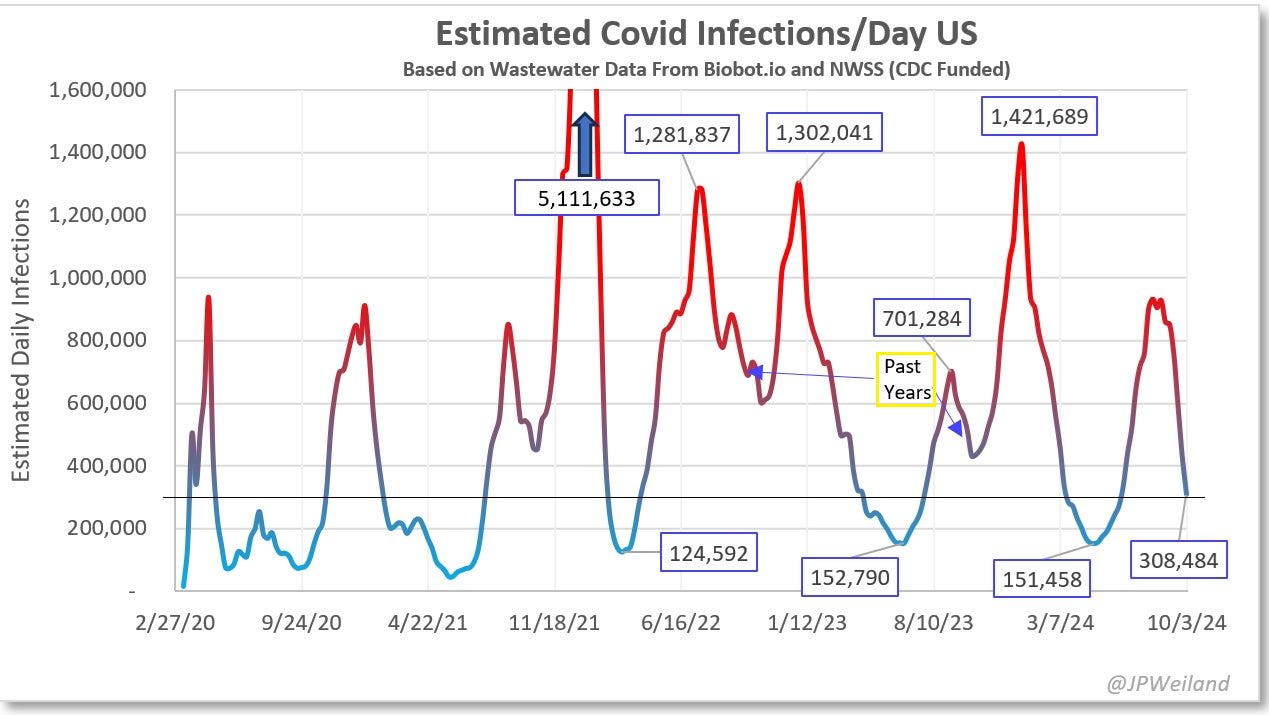
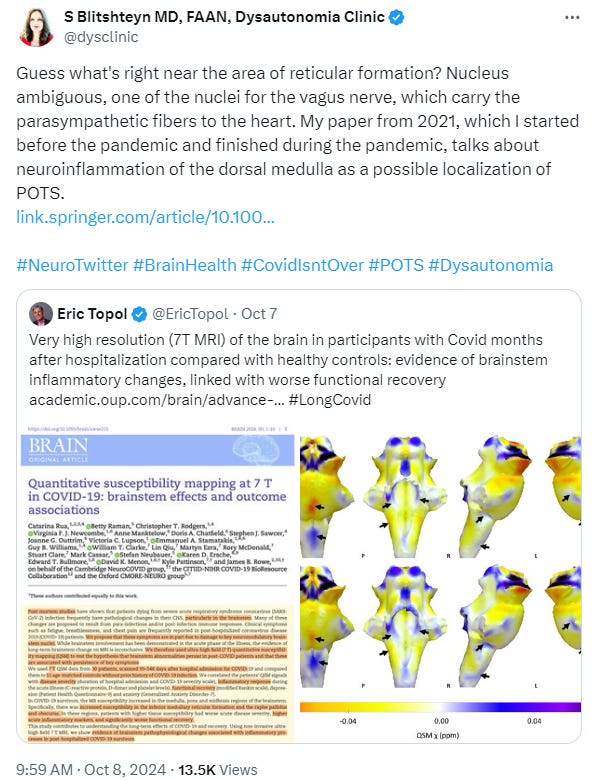
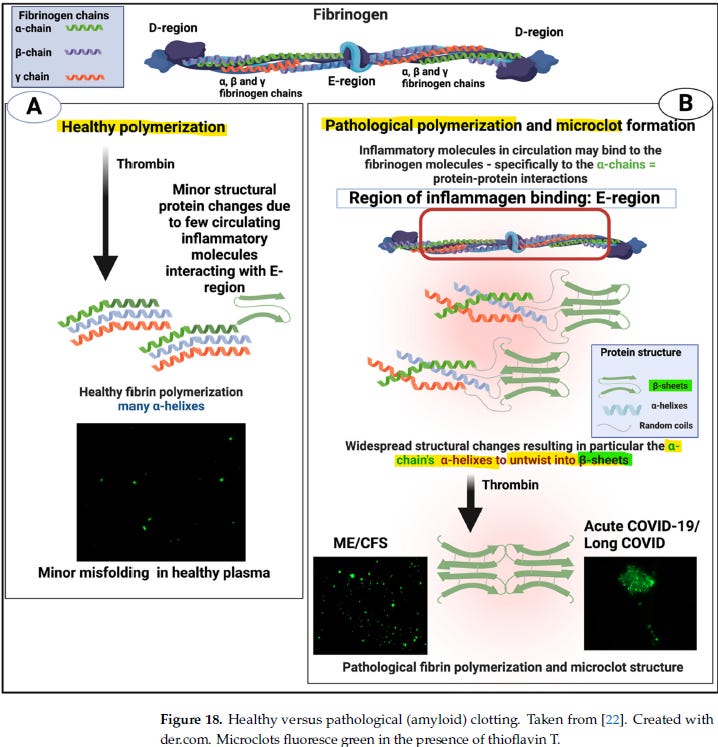
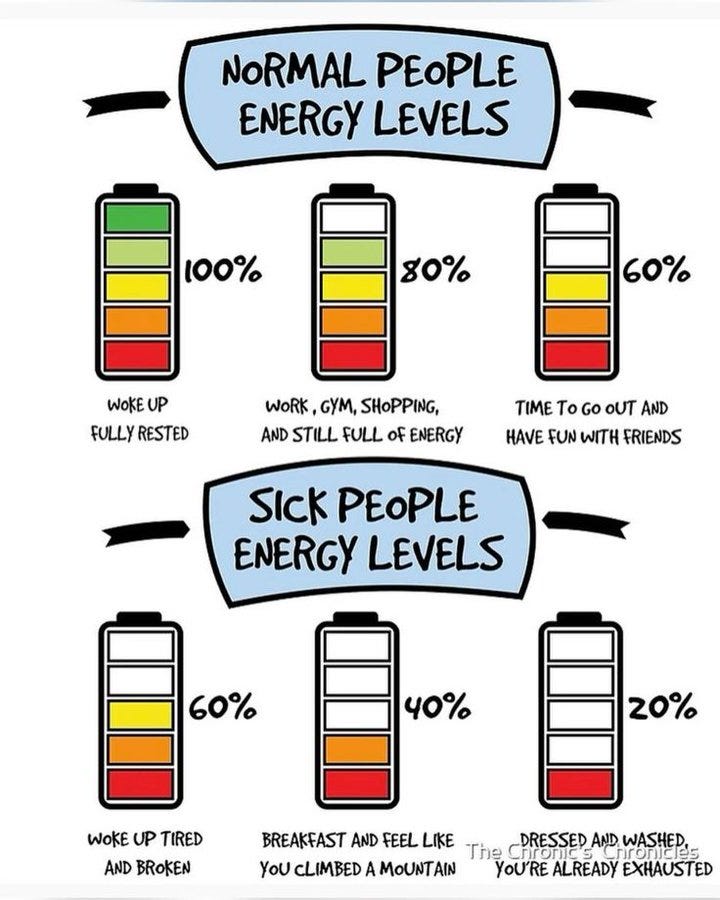
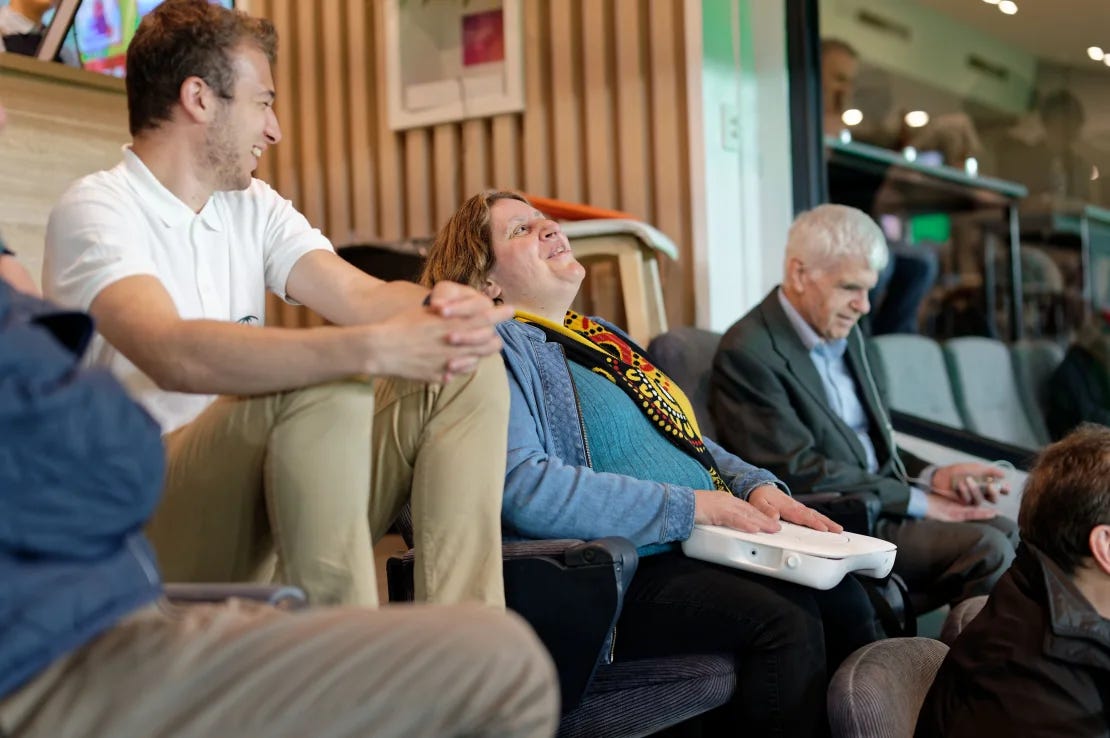












.jpg)
No comments:
Post a Comment